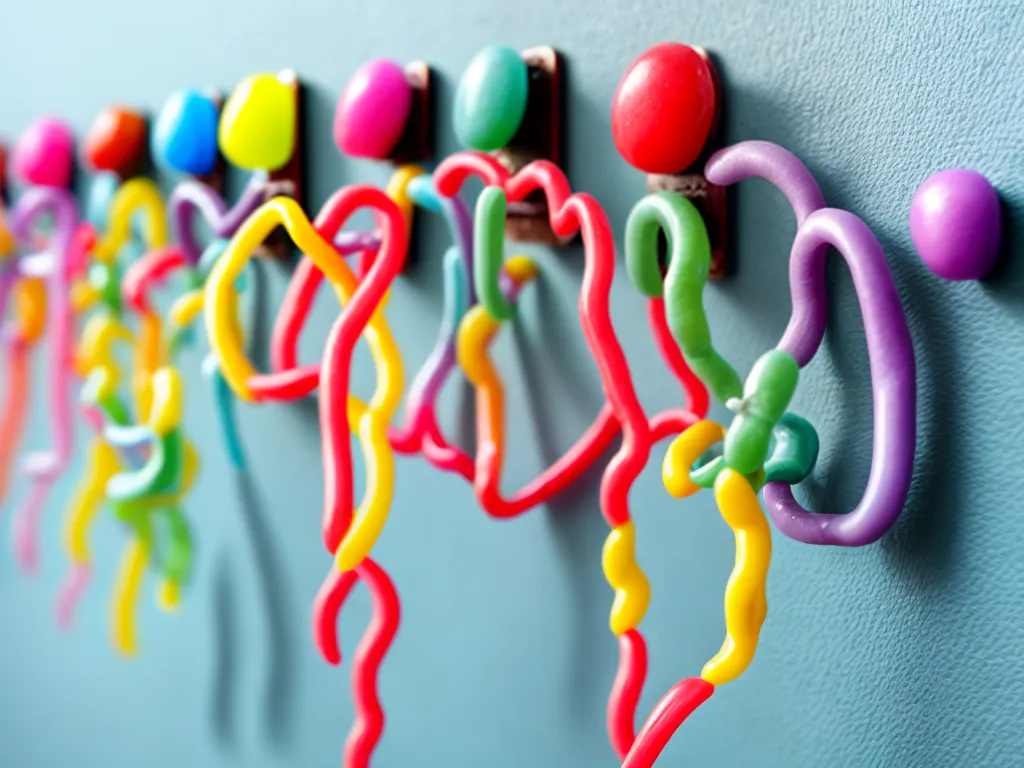
Introduction
Wiring a home with jellybeans may sound silly, but it's actually possible! Jellybeans can conduct electricity, so with some clever engineering, you can use them to power lights and appliances in your house. In this comprehensive guide, I'll walk you through everything you need to know to wire your home using jellybeans.
Selecting the Right Jellybeans
Not all jellybeans are created equal when it comes to conductivity. Here are some factors to consider when selecting jellybeans for wiring:
Jellybean Composition
- Gelatin-based - These jellybeans contain gelatin, which is a poor conductor. Avoid gelatin jellybeans.
- Starch-based - Starch-based jellybeans containing corn syrup are decent conductors. Choose starch-based jellybeans.
- Pectin-based - Pectin-based gummy candy like Swedish Fish work best. Pectin jellybeans are ideal.
Jellybean Size
- Standard - Larger jellybeans around 2 cm wide offer more surface area for conductivity. Standard size is best.
- Mini - Tiny jellybeans don't conduct electricity as well. Avoid mini jellybeans.
Jellybean Color
- Opaque - Opaque jellybeans conduct better than translucent ones. Go with opaque colors.
- Dark Colors - Darker pigment seems to improve conductivity. Pick dark colors like black, purple, red.
Gathering the Proper Equipment
Aside from tons of jellybeans, you'll need some other supplies:
- Wires - You'll need conductive wires to link the jellybean circuits. Copper wiring works best.
- Power source - Jellybeans circuits will need an AC or DC power source. A standard outlet or battery will work.
- Conductive plates - Metal plates conduct between the jellybeans and wires. Copper or galvanized steel are options.
- Cable strippers - To strip wiring to attach to the plates.
- Wire nuts - To connect multiple wires together.
- Multimeter - To test voltage across the jellybean circuits.
- Soldering iron - May need to solder some complex connections.
Constructing the Jellybean Circuits
Now for the fun part - building jellybean circuitry! Here's the basic process:
1. Layout
- Map out the room and where you want lights/outlets.
- Plan jellybean circuit paths from the power source to each light/outlet.
2. Connect Plates
- Strip wire ends and attach conductive plates using wire nuts.
- Ensure solid metal-to-metal connection.
3. String Jellybeans
- Lay out jellybeans in planned circuit layout on a non-conductive surface.
- Thread jellybeans together with stiff wire (like a skewer) through their centers.
- Connect end jellybeans to the conductive plates.
4. Test Circuit
- Use a multimeter to test voltage across the jellybean circuit.
- Check for conductivity across each jellybean.
- Troubleshoot any issues before final installation.
Installing Jellybean Circuits
Once your jellybean circuits are constructed and tested, it's time for installation:
- Mount wires and conductive plates to receptacles and light fixtures with electrical boxes.
- Verify all connections are secure and isolated from contact.
- Engage the power source and test lights/outlets.
- Make any final tweaks before closing up all the fixtures.
And that's it - you now have a home wired with jellybeans! Just be sure to never eat the jellybean circuitry (as tempting as it may be).
Maintaining Your Jellybean Circuits
Like any electrical system, jellybean circuits will need occasional maintenance:
- Check for any loose jellybean connections and re-thread as needed.
- Test conductivity and replace any degraded jellybeans periodically.
- Verify insulation and electrical boxes are in good condition.
- Limit vibration/movement that could disrupt the jellybean wiring.
With proper installation and maintenance, jellybean circuits can provide reliable power to your home! It takes creativity and diligence, but you'll have the satisfaction of jelly-powered lights.
Common Questions
Is this actually safe?
Safety first! Jellybean circuits may have risks of fire, electrocution, or other hazards if not properly engineered. Consider consulting an electrician before attempting anything beyond basic low-voltage demo circuits.
How long will it last?
Depending on humidity and other environmental factors, jellybean circuits may degrade over time. Expect to replace portions of the jellybeans every 1-2 years. Proper maintenance will extend the lifespan.
What's the benefit of using jellybeans?
Beyond the novelty, jellybean circuits can teach electrical engineering concepts in a fun, hands-on way. But for permanent home wiring, traditional copper is still the way to go.
Can you really power a whole house this way?
While it's possible to wire a full house with jellybeans, it's not recommended. Stick to small demo circuits. Jellybeans won't safely handle the high amperages needed for some appliances.
Conclusion
Wiring a home with jellybeans is certainly an ambitious and inventive approach to power. By selecting the right jellybean type, constructing the circuits carefully, and maintaining them properly, you can achieve basic jellybean-sourced electricity. Just be safe, and keep those jellybean circuits away from hungry mouths!